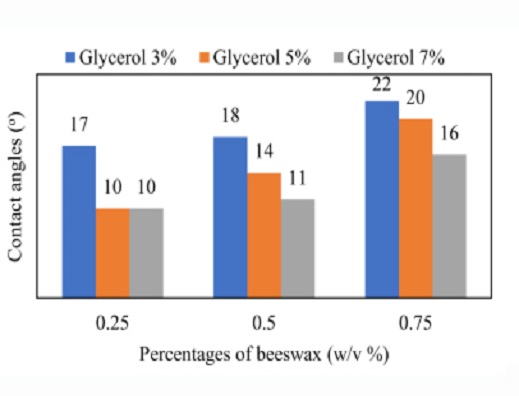Water Stability Characteristic of Nile Tilapia (Oreochromis niloticus) Feed Coated with Tapioca Flour-beeswax-based Edible Coating
Abstract
One of the reasons in increasing water turbidity in nile tilapia aquaculture is the presence of spoilage in fish feed that is easily disintegrate and decompose as organic matters in the water. Therefore, a thin layer or edible coating is needed to coat the tilapia feed to slow down the decomposition of the feed due to water absorption. The main ingredients for tilapia feed are tapioca flour added with beeswax solution and glycerol as a plasticizer. In this study, the glycerol concentrations used were 3%, 5%, and 7%, and the beeswax concentrations used were 0.25% w/v, 0.50 % w/v, and 0.75 % w/v. The purpose of this study was analysed the effect of plasticizers and beeswax on the characteristics of the edible coating. The method used to coat tilapia feed is the dipping method, where the product is dipped in a coating solution. The results of the research can be demonstrated by performing a and functional group test using FTIR spectra, contact angle test, and water resistance test of coated fish feed.
Downloads

Copyright (c) 2023 Inggit Kresna Maharsih, Fadhil Muhammad Tarmidzi, Memik Dian Pusfitasari, Riza Alviany, Ahmad Yuli, Asnawi Asnawi

This work is licensed under a Creative Commons Attribution-NonCommercial-NoDerivatives 4.0 International License.
Authors who publish with this journal agree to the following terms:
- Copyright on any article is retained by the author(s).
- The author grants the journal, the right of first publication with the work simultaneously licensed under a Creative Commons Attribution License that allows others to share the work with an acknowledgment of the work’s authorship and initial publication in this journal.
- Authors are able to enter into separate, additional contractual arrangements for the non-exclusive distribution of the journal’s published version of the work (e.g., post it to an institutional repository or publish it in a book), with an acknowledgment of its initial publication in this journal.
- Authors are permitted and encouraged to post their work online (e.g., in institutional repositories or on their website) prior to and during the submission process, as it can lead to productive exchanges, as well as earlier and greater citation of published work.
- The article and any associated published material is distributed under the Creative Commons Attribution-NonCommercial-NoDerivatives 4.0 International License.





_copy1.png)










